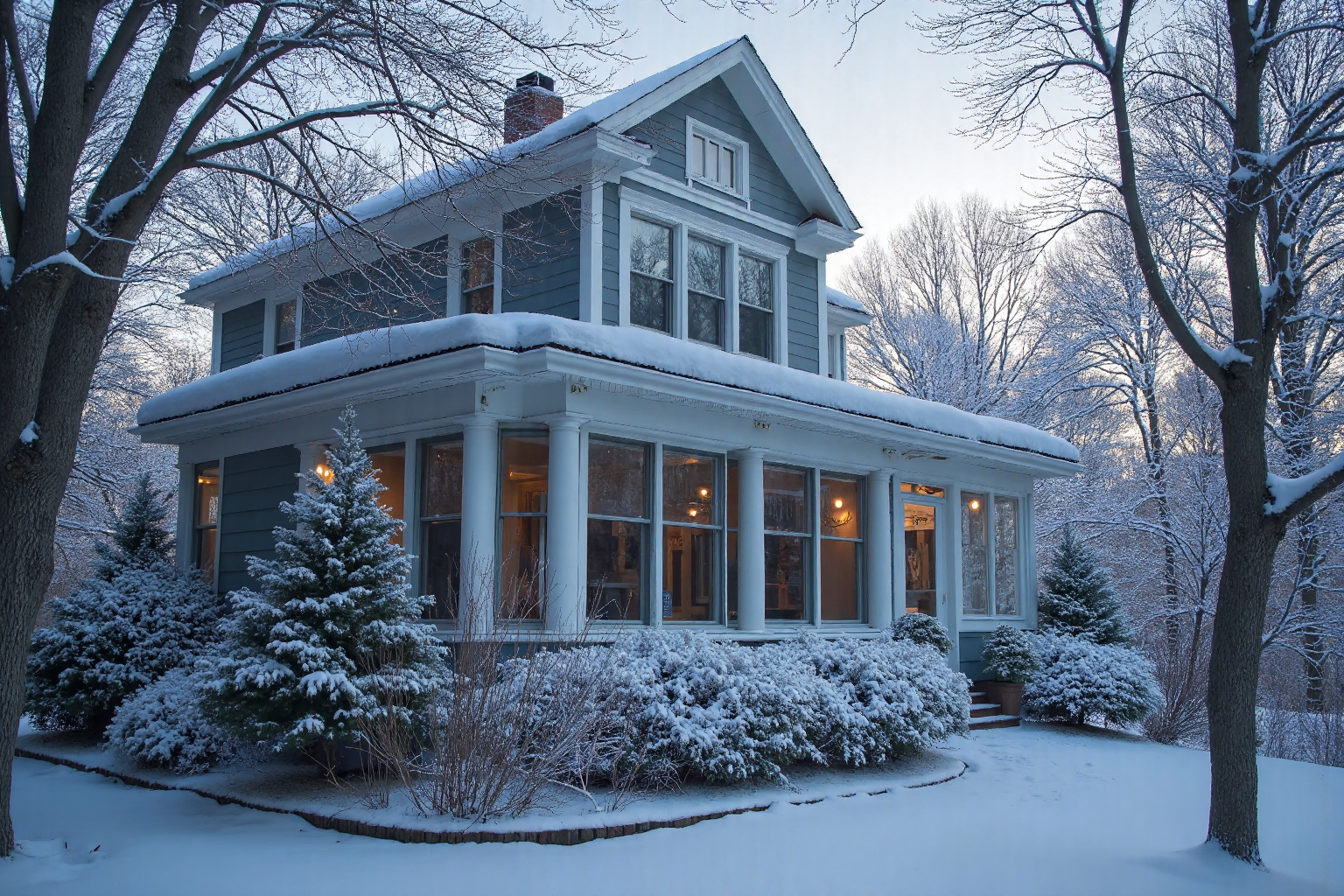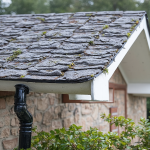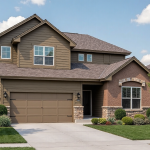Maximize Heat Retention: The Ultimate Guide to Choosing Energy-Efficient Windows for Northeast Winters
Introduction: Beat the Northeast Winter Chill with Energy-Efficient Windows
Winter’s icy grip can be relentless in the Northeast, where sub-zero temperatures and biting winds test the resilience of even the most well-constructed homes. For homeowners in this region, energy efficiency isn’t just a desirable feature – it’s a necessity for maintaining comfort and managing escalating heating costs. One of the most effective ways to combat the Northeast’s winter chill and transform your home into a warm, cost-effective haven is by upgrading to energy-efficient windows.
This comprehensive guide provides actionable advice, practical tips, and industry insights specifically tailored for homeowners in the Northeast who are looking to maximize heat retention, minimize energy waste, and stay cozy throughout the winter months. From understanding the science behind insulated glass to choosing the right frame materials and navigating available rebates, we’ll equip you with the knowledge to make informed decisions and invest wisely in your home’s comfort and energy performance. The frigid Northeast winters place a significant strain on home heating systems, often leading to exorbitant energy bills.
Older, inefficient windows are a major culprit in heat loss, allowing precious warmth to escape while cold drafts infiltrate living spaces. This not only compromises comfort but also puts a dent in your wallet. Energy-efficient windows, designed with advanced technologies and materials, act as a robust barrier against the elements, significantly reducing heat transfer and maintaining a consistent indoor temperature. By investing in these upgrades, you’re not only improving your home’s comfort but also taking a proactive step towards reducing your carbon footprint and contributing to a more sustainable future.
The initial investment is often offset by substantial long-term savings on heating costs, making energy-efficient windows a financially sound decision for Northeast homeowners. Understanding the performance metrics of windows is crucial for making informed choices. Look for windows with low U-values, which measure the rate of heat transfer. A lower U-value indicates better insulation. Similarly, consider the R-value, which measures the window’s resistance to heat flow. Higher R-values signify better insulation. Double-pane windows, featuring two layers of glass with an insulating gas like argon or krypton sealed between them, are a significant improvement over single-pane windows.
For optimal performance in harsh Northeast climates, triple-pane windows offer even greater insulation and noise reduction, further enhancing comfort and energy savings. Choosing the right window frames also plays a vital role in maximizing energy efficiency. Avoid aluminum frames, known for their high conductivity, and opt for wood, vinyl, or fiberglass, which offer superior insulation and contribute to a warmer, more comfortable home. Proper installation is paramount for maximizing the benefits of energy-efficient windows. Ensure your chosen installer is experienced in working with the specific challenges posed by Northeast winters and adheres to best practices for sealing and insulation.
Look for certifications and credentials that indicate their expertise in energy-efficient installations. Finally, explore the various rebates, tax credits, and incentives available for energy-efficient window upgrades in your state. These programs can significantly reduce the upfront cost and make the transition to a more comfortable and energy-efficient home even more appealing. By taking advantage of these resources and following the guidance provided in this guide, you can transform your Northeast home into a warm, cozy, and cost-effective sanctuary, ready to withstand even the most brutal winter weather.
Understanding Insulated Windows
Insulated windows are essential for maintaining a comfortable indoor temperature during harsh Northeast winters, significantly reducing heat transfer and minimizing drafts. These windows achieve their insulating properties through a combination of design elements that work synergistically to trap air and impede heat flow. Double-pane windows, a common choice, consist of two layers of glass separated by a spacer filled with an inert gas like argon or krypton. These gases are denser than air, further hindering heat transfer.
Triple-pane windows take this concept a step further, adding another layer of glass and gas for even greater insulation. This is particularly beneficial in the Northeast’s extreme climate, where temperatures can fluctuate dramatically. For homeowners in this region, triple-pane windows offer the best defense against frigid winter air, significantly reducing heating costs and enhancing overall comfort. However, double-pane windows can be a cost-effective alternative, offering a notable improvement over single-pane windows. The effectiveness of insulated windows is measured by their U-value and R-value.
The U-value, or U-factor, represents the rate of heat transfer through the window. Lower U-values indicate better insulation. Conversely, the R-value measures the window’s resistance to heat flow. Higher R-values signify superior insulating performance. When selecting windows for a Northeast home, aim for low U-values and high R-values to maximize energy efficiency and minimize heat loss during the winter months. Consult with a window specialist to determine the optimal U-value and R-value for your specific needs and budget.
For example, in a historic New England home with original single-pane windows, upgrading to even double-pane windows with a low-E coating can dramatically reduce drafts and improve energy efficiency. Beyond the number of panes and the type of gas fill, the construction of the window frame and sash also plays a critical role in overall insulation. Thermal breaks, incorporated within the frame and sash, create a barrier against heat transfer, further enhancing the window’s energy performance.
These breaks are typically made from less conductive materials like plastic or composite materials, separating the interior and exterior surfaces of the frame and sash. This separation minimizes the conduction of heat through the frame itself, a common weak point in older window designs. Furthermore, advanced low-emissivity (low-E) coatings applied to the glass surface reflect infrared radiation, keeping heat inside during the winter and outside during the summer. These coatings are microscopically thin and virtually invisible, yet they significantly impact a window’s energy performance.
Consider these features when selecting windows to maximize energy savings and maintain a comfortable living environment year-round in the Northeast’s variable climate. Choosing the right insulated windows is a crucial investment for homeowners in the Northeast. By understanding the interplay between factors such as the number of panes, gas fills, U-values, R-values, and frame construction, homeowners can make informed decisions that yield long-term benefits. These benefits extend beyond energy savings to include increased comfort, reduced noise, and enhanced property value. In regions like the Northeast, where winters are long and harsh, investing in energy-efficient windows is a practical step towards creating a warmer, more comfortable, and more sustainable home. Moreover, numerous rebates and incentives are often available for energy-efficient upgrades, making the transition even more financially appealing.
Choosing the Right Frame Materials
Choosing the right window frame material is a critical step in maximizing energy efficiency in your Northeast home, especially during harsh winters. The frame acts as a bridge between the interior and exterior, and its material significantly impacts how well your windows prevent heat transfer. While aluminum frames were once common, their high conductivity makes them a poor choice for energy-conscious homeowners. They readily transfer heat, leading to significant energy loss during winter. Instead, focus on materials like wood, vinyl, or fiberglass, each offering distinct advantages for insulation and performance.
Wood frames have long been valued for their natural beauty and excellent insulation properties. Wood is a natural insulator, creating a thermal barrier that helps keep your home warm in the winter and cool in the summer. However, wood frames require regular maintenance, including painting or staining, to protect them from the elements and prevent rot. In the Northeast’s demanding climate, with its freeze-thaw cycles and harsh weather conditions, this maintenance can be time-consuming and costly.
For homeowners seeking a balance of insulation and low maintenance, vinyl frames offer a compelling alternative. Vinyl, or uPVC (unplasticized polyvinyl chloride), is a highly energy-efficient frame material due to its multiple air chambers that act as insulators. These frames are also resistant to moisture, rot, and insects, making them ideal for the Northeast’s humid summers and snowy winters. Furthermore, vinyl frames require minimal maintenance, typically needing only occasional cleaning. While standard vinyl can become brittle in extreme cold, advancements in vinyl technology have led to more durable and weather-resistant options suitable for Northeast winters.
Consider looking for vinyl frames with impact modifiers for added strength and durability. For the ultimate combination of energy efficiency, durability, and low maintenance, fiberglass frames are an excellent investment. Fiberglass is incredibly strong and resistant to warping, rotting, and insect damage, making it exceptionally well-suited to the Northeast’s variable climate. Its superior insulation properties contribute to lower heating costs and increased comfort during winter. While fiberglass frames typically come at a higher initial cost, their long lifespan and minimal maintenance requirements make them a cost-effective choice in the long run.
When evaluating window frame materials, consider the U-value and R-value. The U-value measures how well a window prevents heat from escaping, with lower values indicating better insulation. The R-value, often used for wall insulation, measures resistance to heat flow. Windows with lower U-values and higher R-values will contribute most significantly to reducing heating costs during Northeast winters. Choosing the right frame material, in conjunction with energy-efficient glass and proper installation, is an essential step toward creating a warm, comfortable, and energy-efficient home.
Installation Best Practices
Proper installation is paramount to realizing the full potential of your insulated windows, especially in the demanding climate of the Northeast. Even the most advanced double-pane or triple-pane windows, boasting impressive U-values and R-values, will underperform if not installed correctly. A meticulous approach is essential: your installer should use high-quality, low-expansion sealant to create an airtight barrier between the window frame and the rough opening. This prevents drafts and moisture infiltration, which can compromise both energy efficiency and the structural integrity of your home.
Furthermore, the cavity between the window frame and the wall should be filled with appropriate insulation, such as closed-cell spray foam or fiberglass batts, to minimize thermal bridging and further reduce heat loss during the harsh winter months. This step is often overlooked but is critical to achieving optimal performance from your new windows. Beyond the basics, consider the nuances of installation specific to Northeast homes. Older homes in the region often have uneven or out-of-square window openings, requiring skilled installers to make precise adjustments and shims to ensure a perfect fit.
A poorly fitted window can create air gaps, negating the benefits of energy-efficient glass and frame materials. Moreover, the extreme temperature swings experienced in the Northeast can cause expansion and contraction of building materials, which can lead to sealant failure over time if not properly addressed during installation. Look for installers with a proven track record of working with historic homes and challenging conditions, and who understand the importance of meticulous preparation and precise execution.
Their experience will be invaluable in ensuring a long-lasting and effective installation. Weatherstripping is another crucial element in maximizing energy efficiency and minimizing drafts around your windows. This flexible material is applied to the perimeter of the window sash and frame, creating a tight seal that blocks air infiltration. Various types of weatherstripping are available, including foam, felt, and rubber, each with different properties and suitable for different applications. It’s important to choose a weatherstripping material that is durable and resistant to the elements, particularly the moisture and extreme temperatures common in the Northeast.
Consider adding weatherstripping to all operable windows, including those that may not seem to have significant air leaks, as even small gaps can contribute to heat loss and increased heating costs. Regular inspection and replacement of worn or damaged weatherstripping is an essential part of ongoing window maintenance. In the Northeast, it’s not just about choosing the right windows; it’s about choosing the right installer. Look for certified professionals who are familiar with the specific challenges posed by the region’s climate and building stock.
Organizations like the National Fenestration Rating Council (NFRC) offer certifications that indicate an installer’s knowledge and competency. Don’t hesitate to ask for references and to review past projects. A reputable installer will also provide warranties on their work, giving you peace of mind that your investment is protected. Additionally, they should be knowledgeable about available rebates, tax credits, and incentives for energy-efficient upgrades in your state. This can significantly offset the initial cost of new windows and further enhance the long-term value of your home improvement project.
Finally, remember that installation is not a one-size-fits-all process. The specific techniques and materials used will depend on factors such as the type of window, the construction of your home, and the local climate conditions. A thorough site assessment by a qualified installer is crucial to determine the best approach for your particular situation. This includes evaluating the existing window openings, identifying any potential issues, and recommending the appropriate installation method. By investing in professional installation, you are ensuring that your energy-efficient windows perform as intended, providing maximum comfort and reducing heating costs for years to come. This approach is particularly vital for Northeast homeowners seeking to combat the harsh winter weather.
Conclusion: Investing in Long-Term Comfort and Savings
Upgrading to energy-efficient windows is not merely a home improvement project; it’s a strategic investment that yields significant returns in the form of lower energy bills and enhanced comfort, especially crucial during harsh Northeast winters. The initial cost may seem substantial, but the long-term savings and added value to your home make it a worthwhile expenditure. Think of it as fortifying your home against the biting winds and freezing temperatures, creating a cozy sanctuary that retains precious heat and reduces reliance on expensive heating systems.
Explore available rebates, incentives, and tax credits for energy-efficient windows specific to your state. These programs can significantly offset the initial investment, making energy-efficient windows more accessible to homeowners. Websites like EnergyStar.gov and the Database of State Incentives for Renewables & Efficiency (DSIRE) provide comprehensive information on available programs. The Northeast’s notoriously harsh winters underscore the importance of maximizing heat retention in homes. Older, single-pane windows are notorious energy wasters, allowing precious heat to escape and cold drafts to enter.
Replacing them with double or triple-pane insulated windows, featuring low-E coatings and argon or krypton gas fills, creates a formidable barrier against heat transfer. This translates to a warmer interior, reduced strain on your heating system, and ultimately, lower energy bills. For example, a homeowner in Maine reported a 25% reduction in their winter heating costs after upgrading to triple-pane windows. Similarly, a homeowner in upstate New York cited a noticeable improvement in interior comfort and a decrease in drafts after installing double-pane windows with low-E coatings.
Choosing the right frame material also plays a vital role in optimizing energy efficiency. While wood frames offer classic aesthetics and excellent insulation, they require regular maintenance to prevent rot and decay in the Northeast’s fluctuating climate. Vinyl frames provide a low-maintenance, energy-efficient alternative, but they may not be as durable as fiberglass or composite frames. Fiberglass frames offer exceptional durability, energy efficiency, and resistance to warping, making them an ideal choice for the Northeast’s challenging weather conditions.
Consider consulting with a window specialist to determine the best frame material for your specific needs and budget. Proper installation is paramount for maximizing the benefits of energy-efficient windows. A poorly installed window, regardless of its energy-saving features, can negate its effectiveness by allowing air leakage and drafts. Ensure your installer is experienced in working with the Northeast’s unique climate challenges and uses high-quality sealant and insulation around the window frame. Inquire about their installation process and ask for references to verify their expertise.
Properly installed windows create a tight seal against the elements, preventing heat loss and maximizing energy savings. Regular maintenance, such as cleaning and lubricating the window hardware, can prolong the lifespan of your windows and ensure optimal performance. Cleaning the glass removes dirt and grime that can obstruct sunlight and reduce energy efficiency. Lubricating the hardware ensures smooth operation and prevents wear and tear. By following these tips and making informed decisions, you can create a warm, comfortable, and energy-efficient home that stands up to the toughest Northeast winters while enjoying long-term cost savings and enhanced comfort.


